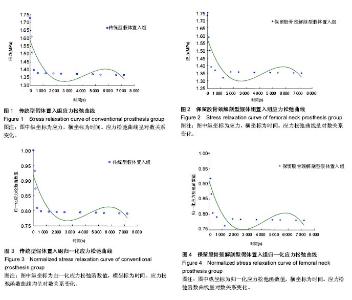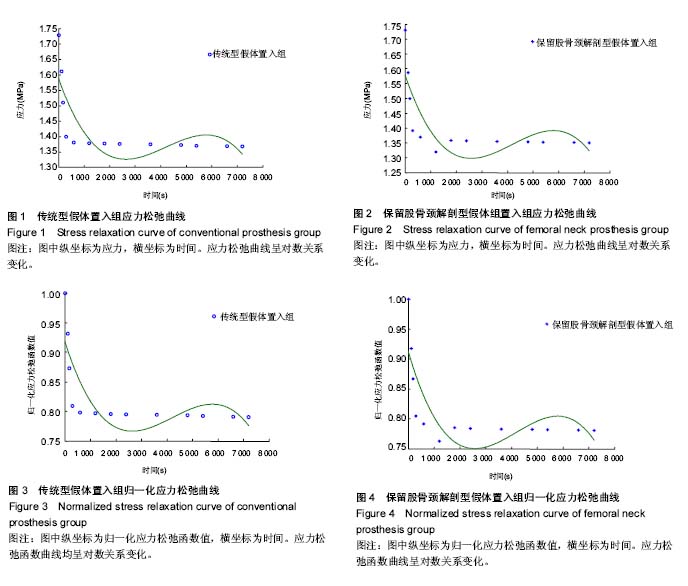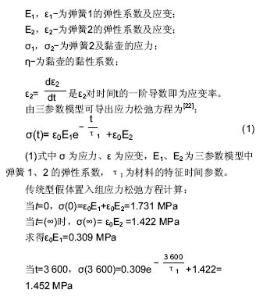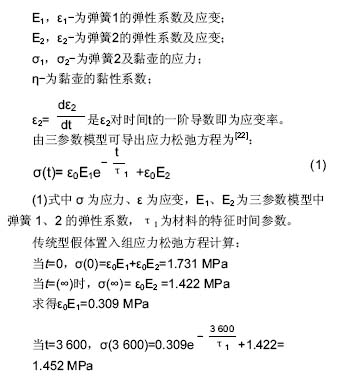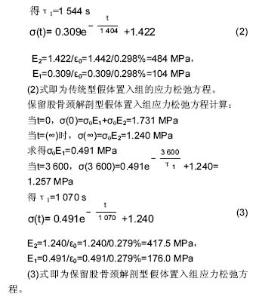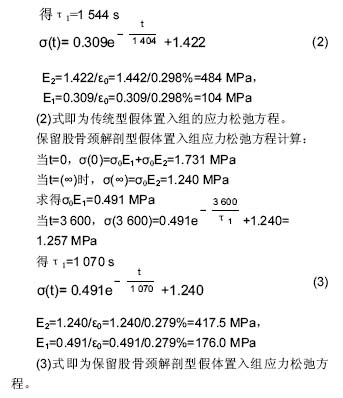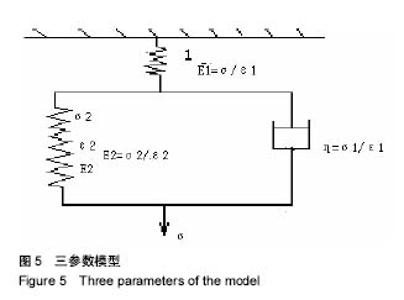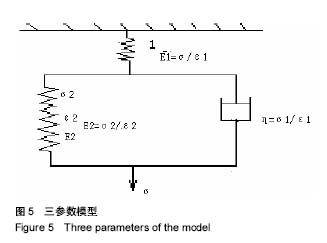| [1] 朱本清.股骨假体置换术后粘弹性和稳定性的实验研究[D].北华大学,2001.[2] Rodrigues SP, Paiva JM, De Francesco S, et al. Artifact level producedby different femoral head prostheses in CT imaging: diamond coatedsilicon nitride as total hip replacement material. J Mater Sci Mater Med. 2013;24(1): 231-239.[3] 杜东鹏,潘奇,姜文雄,等. 髋 关节置换治疗老年股骨粗隆间骨折的假体选择[J]. 创伤外科杂志,2013,15(5): 400-403.[4] Gillam MH, Lie SA, Salter A, et al. The progression of end-stage os-teoarthritis: analysis of data from the Australian and Norwegian jointreplacement registries using a multi-state model. Osteoarthritis Cartilage. 2013; 21(3): 405-412.[5] 华寒冰,毕郑刚. 高龄患者半髋关节置换后骨折风险的评估方法[J]. 中国组织工程研究,2014,18(31): 5062-5067.[6] Kin KJ, Chiba J, Rubash HE, et al.The characterization of cytokines in the interface tissue obtained from failed cementless total hip arthroplasty with and without femour osteolysis. Clin Orthop.1994;47(300):304-310.[7] 孙振辉,刘月驹,李衡. 髋关节置换与内固定术治疗老年移位型股骨颈骨折术后再手术率和并发症的系统评价[J]. 中华创伤骨科杂志,2014,16(2):115-121.[8] 关群,熊小江,唐进,等. 人工关节置换治疗老年股骨转子间不稳定骨折[J]. 中华创伤杂志,2014,30(3):211-216.[9] 季烈峰,陈巨坤,徐丁, 等.股骨近端防旋髓内钉与解剖锁定钢板治疗老年股骨转子间骨折疗效比较[J].中华创伤骨科杂志, 2014,16(8):727-730.[10] Gavaskar AS, Subramanian M, Tummala NC. Results of proximal femur nail antirotation for low velocity trochanteric fractures in elderly. Indian J Orthop. 2012; 46(5):556-560. [11] Hwang JH, Garg AK, Oh JK, et al. A biomechanical evaluation of proximal femoral nail antirotation with respect to helical blade position in femoral head: A cadaveric study. Indian J Orthop. 2012;46(6):627-632. [12] Niikura T, Lee SY, Matsumoto T, et al. Backout of the helical blade of proximal femoral nail antirotation and accompanying fracture nonunion. Orthopedics. 2012;35(8):e1264-1266.[13] Matharu GS, Mc Bryde CW, Pynsent WB, et al. The outcome of the Birmingham Hip Resurfacing in patients aged < 50 years up to 14 years post-operatively. Bone Joint J. 2013; 95-B(9): 1172-1177.[14] Yoo MC, Cho YJ, Kim KI, et al. Resurfacing arthroplasty in osteonecrosis of the femoral head-minimum 3 years follow-up. J Bone Joint Surg (Br). 2010;92-B(Suppl I): 145.[15] Sandiford NA, Ahmed S, Doctor C, et al. Patient satisfaction and clinical results at a mean eight years following BHR arthroplasty: results from a district general hospital. Hip Int. 2014;24(3): 249-255.[16] Pailhe R, Matharu GS, Sharma A, et al. Survival and functional outcome of the Birmingham Hip Resurfacing system in patients aged 65 and older at up to ten years of follow-up. Int Orthop. 2014;38(6):1139-1145.[17] Daniel J, Pradhan C, Ziaee H, et al. Results of Birmingham hip resurfacing at 12 to 15 years: a single-surgeon series. Bone Joint J. 2014;96-B (10): 1298-1306.[18] Kretzer JP, Jakubowitz E, Krachler M, et al. Metal release and corrosion effects of modular neck total hip arthroplasty. Int Orthop. 2009;33(6): 1531-1536.[19] Wang Y, Li ZW, Luo M, et al. Biological conduits combining bone marrow mesenchymal stem cells and extracellular matrix to treat longsegment. Neural Regen Res. 2015; 10(6):965-971. [20] Jin H, Yang Q, Ji F, et al.Human amniotic epithelial cell transplantation for the repair of injured brachial plexus nerve: evaluation of nerve viscoelastic properties. Neural Regen Res.2015;10(2):260-265.[21] 王墨林,周安国,马洪顺. 去势大鼠所致骨质疏松对骨的粘弹性力学性质影响[J].北京生物医学工程,2008,27(3):272-275.[22] 于涛.保留股骨颈解剖型股骨上端假体的生物力学研究[D].吉林大学,2003.[23] Kim YH,Kim JS,Cho SH.Strain distribution in the prximal human femur.An in vitro comparison in the intact femur and after insertion of reference and experimental femoral stems.J Bone Joint Surg(Br). 2001;83(2):295-301.[24] 张鹏,孔杰,刘泽淼,等.全髋关节置换后外侧结构重建前后的生物力学变化[J]. 中华关节外科杂志,2014,8(6):779-782.[25] Hirata Y,Inaba Y, Kobayashi N,et al. Comparison of mechanicalstress and change in bone mineral density between two types of femo-ral implant using finite element analysis. J Arthroplasty. 2013;10:1731-1735.[26] Liu WG,Liu SH,Yin QF,et al. Biomechanical characteristics of hip prosthesis in hip arthroplasty treating elderly patients with Evans I-III intertrochanteric fracture of femur. Acta Academiae Medicinae Sinicae. 2013;1:108-111.[27] 郑忠,李超雄,李坚,等. 成人先天性髋臼发育不良人工髋关节置换术髋臼安装方法的力学比较[C].//中国骨伤发展战略高层论坛暨中西医结合骨伤学术大会, 2004.[28] 郭磊,赵玉岩,范广宇,等. 髋臼发育不良的生物力学实验研究[J].中国医科大学学报, 2001,30(4):277-278. [29] Kokubo Y, Uchida K, Oki H, et al. Modified metaphyseal-loading anterolaterally flared anatomic femoral stem: five- to nine-year prospective follow-up evaluation and results of three-dimensional finite element analysis. Artif Organs. 2013;2: 175-182.[30] Bougherara H, Zdero R, Dubov A, et al. A preliminary biomechanicalstudy of a novel carbon-fibre hip implant versus standard metallic hipimplants Med Eng Phys. 2011;1: 121-128.[31] Reimeringer M, Nuno N, Desmarais TC, et al. The influence of unce-mented femoral stem length and design on its primary stability: a finite element analysis. Computer Methods Biomech Biomed Eng. 2013;11: 1221-1231.[32] 张玉朵,张伟,王玉林,等.人工髋关节置换前后股骨及假体的生物力学分析[J]. 中国临床解剖学杂志,2007,25(5):579-582.[33] Jolles BM, Zangger P, Leyvraz PF. Factors predisposing to dislocationafter primary total hip arthroplasty: a multivariate analysis. J Arthroplasty. 2002;17(3):282-288. |
